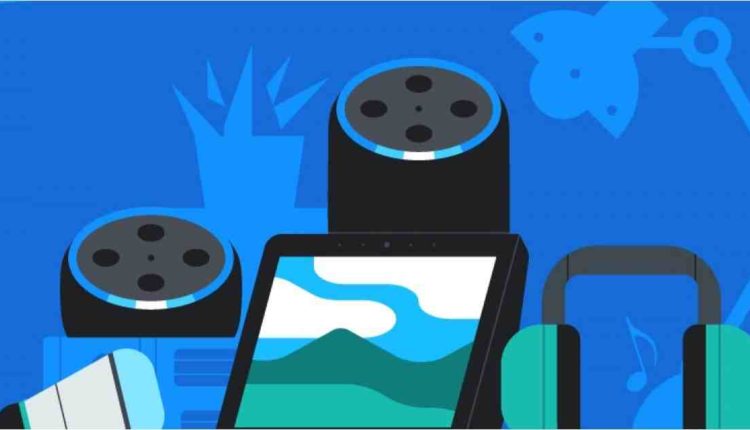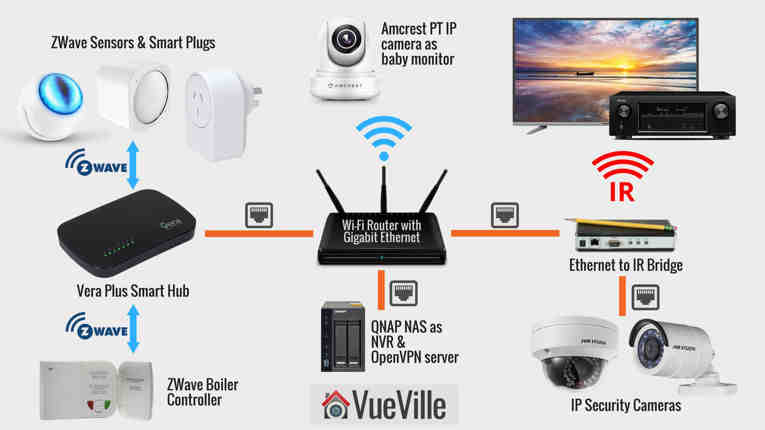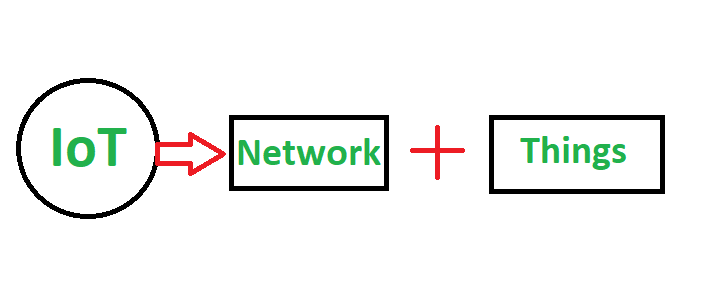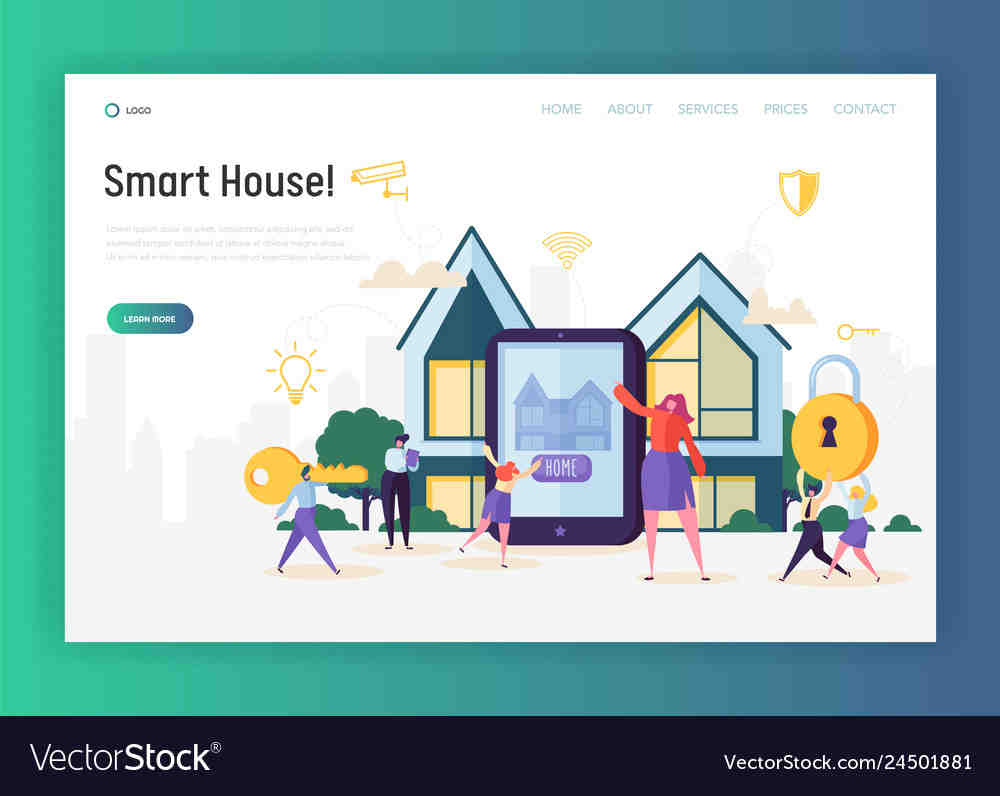How do I start a smart home?
How do I make my home high tech?
Contents
From self-programming thermostats to voice-activated TV controls, here are 9 devices, appliances and gadgets designed to increase the tech IQ of your home. Read also : Home Automation.
- August Smart Lock. …
- Home Automation Systems. …
- Video Doorbell. …
- Philips Hue Smart Lighting. …
- Smart TVs. …
- Bosch winding machine. …
- Steam powered washer and dryer.
How can I make my house more technically demanding? One way to build a smart home is to buy many components – sensors, smart bulbs, security cameras, speakers, and what not – and connect them all with a hub that helps them communicate with each other and with you, via your smartphone.
How do I make a smart room with Alexa?
Does Alexa know in what room it is? Over the weekend, Amazon rolled out new Alexa functionality. One of the new skills is spatial awareness. This may interest you : How many types of home automation systems are there?. This means you can now add your Echo device to a group of other devices in the same room, giving Alexa the ability to know which devices are in the area.
Can Alexa control your whole house?
With the help of smart home appliances, such as light bulbs, thermostats, and door locks, Alexa will establish your voice connection between you and your smart home. See the article : Which controller is used for home automation?. Controlling your smart home appliances with your voice is one of those things that you will really “get” if you try it.
Can Alexa monitor your room?
With Home Monitoring enabled on your Echo Show 10 (3rd Gen), you can configure routines that trigger when a person is detected. For example, you can enable Alexa Smart Devices when a person enters a room.
What does a smart home consist of?
The devices of a smart home are interconnected and can be accessed via one central point – a smartphone, tablet, laptop or game console. Your locks, TVs, thermostats, home monitors, cameras, lights, and even appliances like the refrigerator can be controlled by a home automation system.
What can a smart home do? A smart home allows homeowners to remotely control appliances, thermostats, lights and other appliances with a smartphone or tablet over an internet connection. Smart homes can be set up through wireless or hardwired systems. Smart home technology offers homeowners comfort and cost savings.
What a smart home should have?
You will need: An Amazon Echo product. A TP-Link Smart Plug. A plug-in fan with a physical power switch that stays in the “on” position. Set up an Apple or Android smartphone for Alexa to talk to the Smart Plug.
What do you mean by smart home?
A smart home is a residence that uses Internet-connected devices to enable remote monitoring and management of appliances and systems, such as lighting and heating.
Is a smart home worth it?
Home automation can streamline household chores, secure the home and even save money on utilities. Smart thermostats cost an average of $ 200, and homeowners save about $ 140 a year on their energy bill, which means they can pay for themselves in just two years.
What is considered a smart home?
A smart home is a residence that uses Internet-connected devices to enable remote monitoring and management of appliances and systems, such as lighting and heating.
What are four examples of smart devices?
Some notable types of smart devices include smartphones, smart cars, smart thermostats, smart doorbells, smart locks, smart refrigerators, phablets and tablets, smartwatches, smart bands, smart key chain, smartglasses, and many others.
Are smart homes a good idea?
Improved safety and security Smart homes greatly increase people’s safety levels. By being able to easily turn off all smart devices of your phone – within seconds – there is no need to panic anymore when you are out of the house and suddenly find that you have left the stove on.
Are smart homes the future?
There is no shortage of statistics or research that predicts the growth of the smart home – millions of new endpoints have found their way into homes in the last year or two, worldwide. Consumer demand for these smart devices, driven by purchases made during the pandemic, will likely continue in the foreseeable future.
Are smart homes a good idea? Improved safety and security Smart homes greatly increase people’s safety levels. By being able to easily turn off all smart devices of your phone – within seconds – there is no need to panic anymore when you are out of the house and suddenly find that you have left the stove on.
Is home automation the future?
Home Automation creates new automation technologies for homes that make them intelligent with Internet-based technologies. These houses / houses that use home automation technologies are smart houses. This area of home automation is emerging rapidly in technology that makes homes safer and better places to live.
What does the future of home automation look like?
While current demand is a guide, most of these new devices include smart power cords, speakers and light bulbs, as well as video door clocks, remote-activated locks, and surveillance cameras. But this is just the beginning, according to the Smart Home industry, which is pushing a new concept: “contextual awareness”.
Are smart homes the future?
According to Internet of Things (IoT) analysts, the future of Smart Home will evolve from its commercial “plug and play” to an “integrated” feature where Smart Home technology will build a standard feature for new homes in the future.
What is next for smart homes?
While current demand is a guide, most of these new devices include smart power cords, speakers and light bulbs, as well as video door clocks, remote-activated locks, and surveillance cameras. But this is just the beginning, according to the Smart Home industry, which is pushing a new concept: “contextual awareness”.
What is next in smart home technology?
Starting next year, consumers will be able to buy smart home appliances – such as thermostats, lighting systems and kitchen appliances – that can talk to each other about a new connectivity standard called Matter.
Are smart homes on the Rise?
The number of smart homes is forecast to grow and exceed the 350 million mark by 2023. Smart speakers are the most well-known market segment, of which approximately 320 million were in use by 2020. The size of the installed base should be doubled. until 2024.
Are smart homes on the Rise?
The number of smart homes is forecast to grow and exceed the 350 million mark by 2023. Smart speakers are the most well-known market segment, of which approximately 320 million were in use by 2020. The size of the installed base should be doubled. until 2024.
Are smart homes in demand?
The smart home market is expected to grow by 17 percent each year and become an industry of $ 58.68 billion by 2020. Twenty-six percent of consumers believe it is important to have their current or next home smart home technology.
Are smart homes a trend?
A recent global report projected global smart home market growth from $ 78.3 billion in 2020 to $ 135.3 billion in 2025, at a CAGR of 11.6%. Consistent with this and other industry research, 57% of respondents to our Smart Home Trends survey have seen the overall market opportunity more than double in just two years.




Comments are closed.